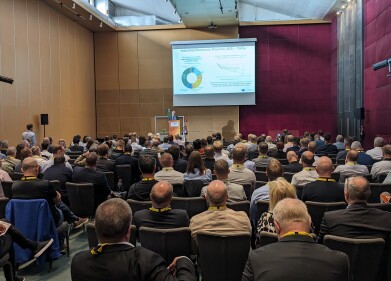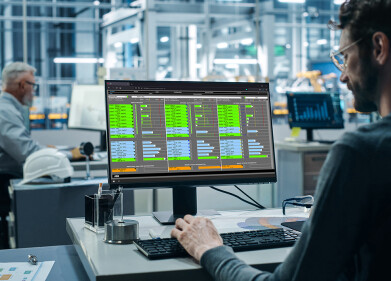Air monitoring
How is uncertainty determined for Automated Measuring Systems?
Jul 20 2023
Taking place from 20th to 22nd September 2023 in sunny Barcelona, CEM 2023 will be our largest emissions monitoring event to date, with more exhibitors and presentations than ever! With 25 years of experience behind it and regular attendance from all around the world, this year’s conference will be CEM’s highly anticipated return to live events – and once again, our Scientific Committee have excelled themselves, putting together a jam-packed programme of talks and workshops delivered by thought-leaders, regulators and industry veterans from all across this global sector. As such, CEM 2023’s conference programme features representatives from many of the major national research institutions, with talks from members of the European Integrated Pollution Prevention and Control Bureau (EIPPCB), a department of the European Commission’s Joint Research Centre; the Environmental Protection Agency (United States); the National Institute for Industrial and Environmental Risks (France); the Council of Scientific and Industrial Research (India); the Technical Research Centre of Finland; Italy’s Institute for Energy System Research (RSE); and the National Physical Laboratory (United Kingdom).
On Day 1 of CEM 2023, the NPL’s Rod Robinson will share some of his expertise in determining the uncertainty in reported Automated Measuring System (AMS) results. As things stand, the quality assurance of those AMSs which report emissions under regulations like the Industrial Emissions Directive (IED) is defined within a suite of European Standards including EN 14181, EN 15267 and EN 17255 as well as a suite of Standard Reference Methods (SRMs), providing a framework in which AMSs can be assessed, calibrated and how the data are handled. There are a number of criteria within these standards: for example, maximum permissible uncertainties and criteria on the standard deviation of the calibration function. The IED defines quality criteria related to the uncertainty of the reported AMS results and this is critical when comparing the AMS results to emission limits. (The revision of the IED is likely to firm up this requirement.) There is, however, no defined procedure to determine the uncertainty of the AMS results, and member states have adopted various inconsistent approaches. As a result, Rod Robinson's presentation will present an assessment of the uncertainty in AMS results for short-term and daily averages, describing the sources of this uncertainty and exploriing its influence on results. A calculation approach is given and comparisons made to a comprehensive Monte Carlo model of the EN 14181 for developing guidance on assessing the uncertainty of AMS results.
With two rooms running sessions in parallel over all three days of the conference, attendees to CEM 2023 will have full access to a whole host of presentations that will provide process operators, plant managers, laboratory technicians, instrument users and apprentices with the latest information on developments in emissions monitoring and measuring applications, regulations and technologies.
If you’re interested in attending this year’s most exciting emission monitoring event, just click here to get your pass to CEM 2023 today.
Digital Edition
AET 28.4 Oct/Nov 2024
November 2024
Gas Detection - Go from lagging to leading: why investment in gas detection makes sense Air Monitoring - Swirl and vortex meters will aid green hydrogen production - Beyond the Stack: Emi...
View all digital editions
Events
Jan 12 2025 Abu Dhabi, UAE
Jan 14 2025 Abu Dhabi, UAE
Jan 20 2025 San Diego, CA, USA
Carrefour des Gestions Locales de L'eau
Jan 22 2025 Rennes, France
Safety, Health & Wellbeing LIVE
Jan 22 2025 Manchester, UK



















